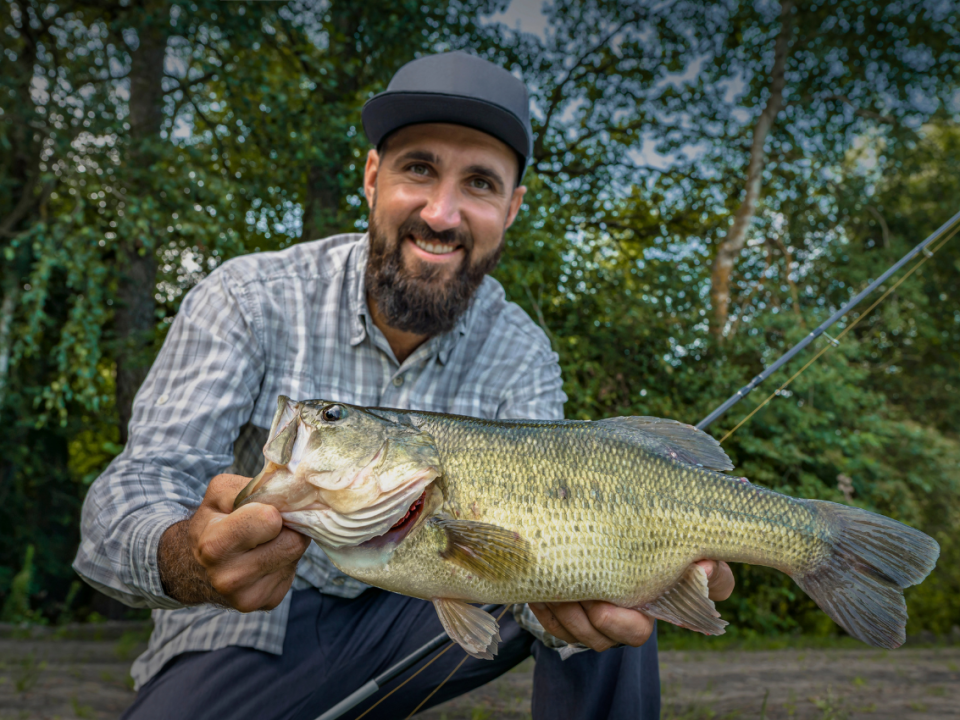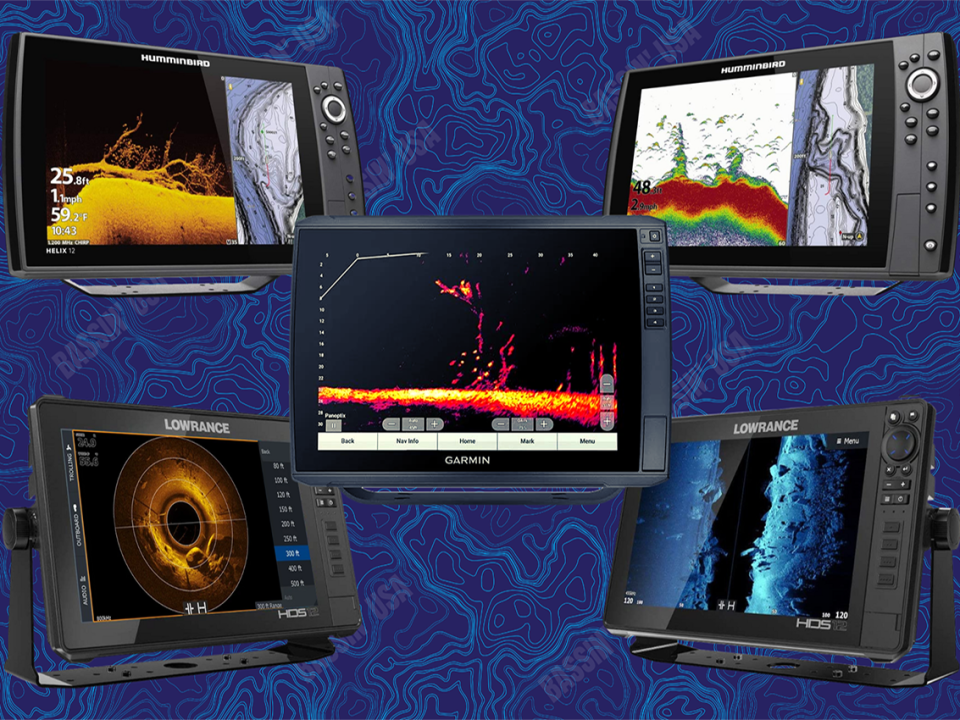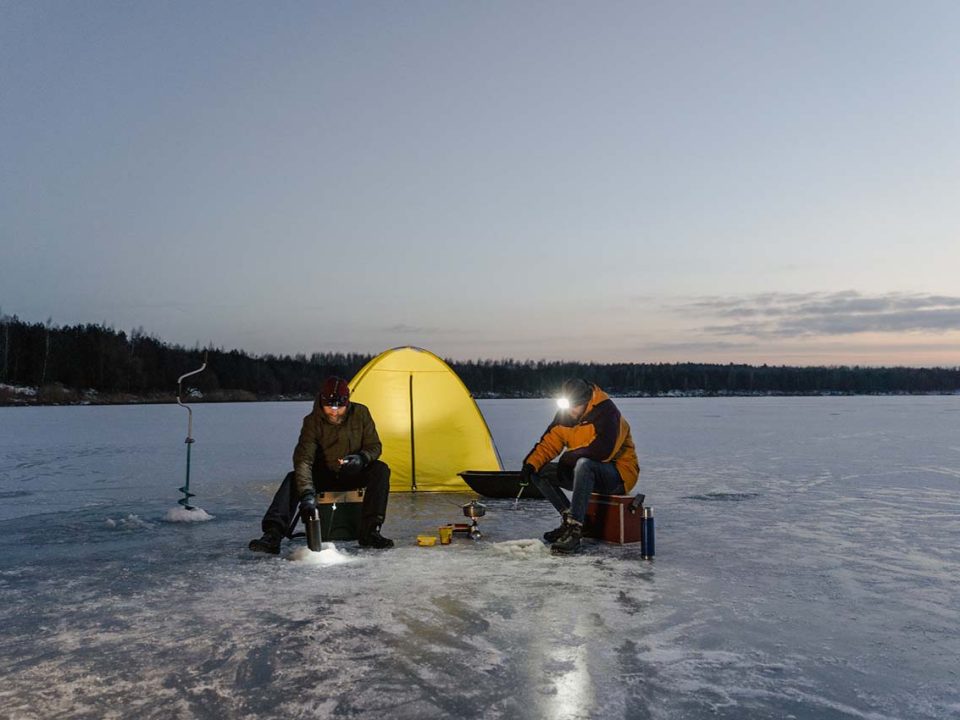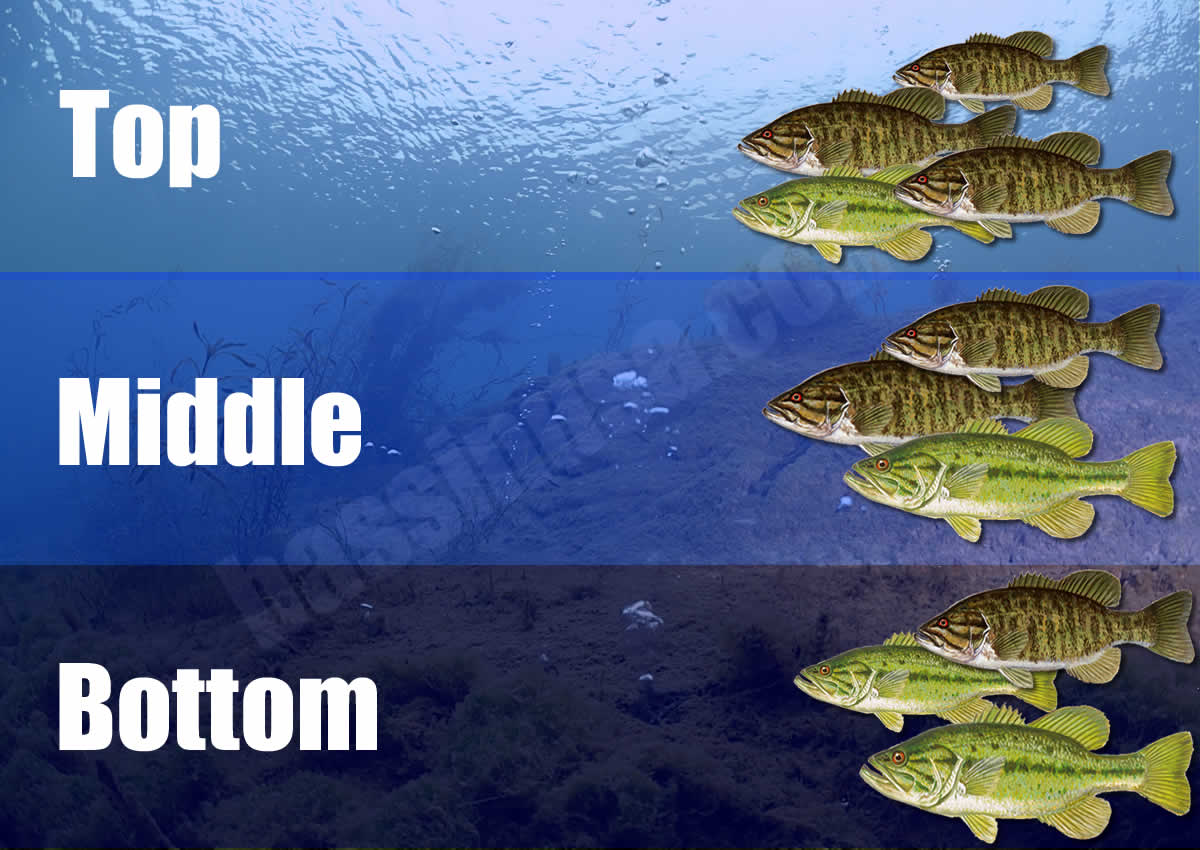
Want to learn how to quickly pin point the most productive feeding zone while fishing for bass? If you can master this one tactic, you will consistently catch more bass.
One of the most important factors you can determine is if bass are looking for a “vertical” or “horizontal” presentation? When you can identify this one piece of the puzzle quickly, the rest will fall into place easier.
At the very least if you only get the “vertical/horizontal” preference determined, you’ll be 50% more productive while you are out fishing.
If you are in a boat with decent electronics and you know how to use them to determine what the predominant depth zone (top, middle, bottom) bass are using, you should find this fairly simple to do. If not, there’s a tip below that will help you.
For this technique, I would recommend using a 6’ to 6’6” Medium Power Fast Action rod. I like fast action rods with single hook lures. I pair mine with a Daiwa Sol 2500 reel or a Shimano Stradic MGFA 2500. For line, I recommend using a tuff 6-pound test line like Berkley Trilene XT. For really clear water I like to use fluorocarbon lines, but it’s not a must.
So here’s what you need to do. You’ll need to start by using a 3” soft plastic grub rigged on a ¼ oz mushroom or ball head jig. Choose a color that you have confidence in. A color that you know produces on the body of water you are fishing.

Cast it out and start counting as soon as it hits the water surface (1 Mississippi, 2 Mississippi). Let it go all the way to the bottom then and let it sit for a few seconds (vertical presentation). If you get hit on the drop or after the lure is sitting on the bottom, they are most likely looking for a vertical presentation. Pay attention to on what count the strike occurred. If you did not get hit on the drop or after letting the grub sit for a few seconds, then begin to reel it in slow and steady (horizontal presentation). It is very important that you do not move or twitch your rod while reeling in. Just keep the grub coming along steadily. If you get a strike or notice a bass following the grub back to the boat/shore, they are most likely looking for horizontal moving lures.
If you are fishing in deeper water, you might be wondering how are you going to be able to know where the bass hit in the water column? Here’s a little trick you can use. When you make a cast with the grub, start counting as soon as it hits the water surface (1 Mississippi, 2 Mississippi). See how long it takes for the grub to hit bottom. If it takes a “10 Mississippi count” to hit bottom, now you have a baseline to work from. Just break it into thirds and put the leftover in the middle column. Meaning Top= 1,2,3 Middle=4,5,6,7 bottom=8,9,10
Now make a cast, give it a 3 count (top) and start reeling the grub back in slow and steady. Repeat the process a few times paying close attention for strikes or follow-ins.
If you do not connect, try a 7 count (middle) and again start reeling the grub back in slow and steady. Again, repeat the process a few times paying close attention for strikes or follow-ins.
 For vertical presentations, you can do the same thing by counting down on the fall. Now when did the strike occur (on what count)? Let’s say you got a strike on “3 Mississippi”, try and fine-tune your presentation by making another cast and only let the bait fall for a “4 or 5 count”. If you continue to get strikes during the first “5 count” you now know that the bass is using the “TOP COLUMN” for the active feeding-zone. So you can simply fan cast around and only let the grub fall for a five count, then reel it back in steadily and cast again… no sense letting it go all the way to the bottom if you do not have to.
For vertical presentations, you can do the same thing by counting down on the fall. Now when did the strike occur (on what count)? Let’s say you got a strike on “3 Mississippi”, try and fine-tune your presentation by making another cast and only let the bait fall for a “4 or 5 count”. If you continue to get strikes during the first “5 count” you now know that the bass is using the “TOP COLUMN” for the active feeding-zone. So you can simply fan cast around and only let the grub fall for a five count, then reel it back in steadily and cast again… no sense letting it go all the way to the bottom if you do not have to.
It’s important to remember that you’ll still need to try both vertical and horizontal presentations regardless of which feeding zone you find bass using, (top, middle or bottom) until you find their preference. When you can consistently put these two pieces of the puzzles together quickly, your fishing consistency will rise dramatically. You will be able to eliminate unproductive water more quickly and ultimately find where the bigger bass are feeding.
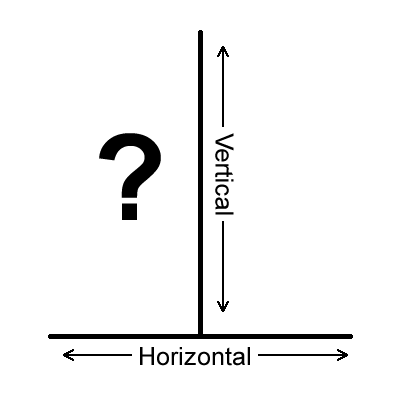
Sometimes they’ll be all over a grub and you can just adjust the retrieval speed, depth, color, size, etc. fine-tune your presentation. Other times if you switch over to a crankbait, spinnerbait, swimbait or something that moves horizontally, you’ll be able to start connecting with bass that are aggressively chasing down baitfish.
Let’s say you notice that your first strike occurred on the drop, you should try and duplicate that presentation. Make another cast and let the grub to fall vertically. If you are able to trigger more strikes, you now know that the bass are looking for a “vertical” presentation. Let’s say that you are getting some strikes on the fall, but not really connecting with the bass that strike, you already have one piece of the puzzle solved (they want a vertical presentation) so now you can try using a different lure with a vertical presentation.
Personally, when faced with short strikes, I like to immediately “down-size” the lure I am using. You might choose to throw a smaller grub on a lighter jig head (let’s say a 2″ grub on a 1/8 ounce ball head jig). Cast it out and let it sink to the bottom. Pay attention to where you get your strikes. Near the top? On the way down? At the bottom? This will let you know where preferred feeding-zone is. You will quickly start to see better and better results as you figure out more of these details. This is called fine-tuning a presentation.
As you start to imagine trying this, you’ll probably have a lot of “what if’” questions come to mind. Like, “what if the bass hits after the grub is sitting on the bottom after the 10 count is over”, or “how long should I let the grub sit on the bottom before working back in”, or “should I work it back in”. What I can offer is simply “experiment”… but pay close attention to when the strike occurs. For more insight on fine-tuning your lure presentation, Frank Lapinski from our NY Prostaff wrote a great three-part article that can help explain this in more detail, here’s the link to “Bass talk, are you listening? – part 2“
The better you get at this, the more and bigger bass you will catch. I know it may sound complicated at first, but it is really very simple once make a habit of this process.




